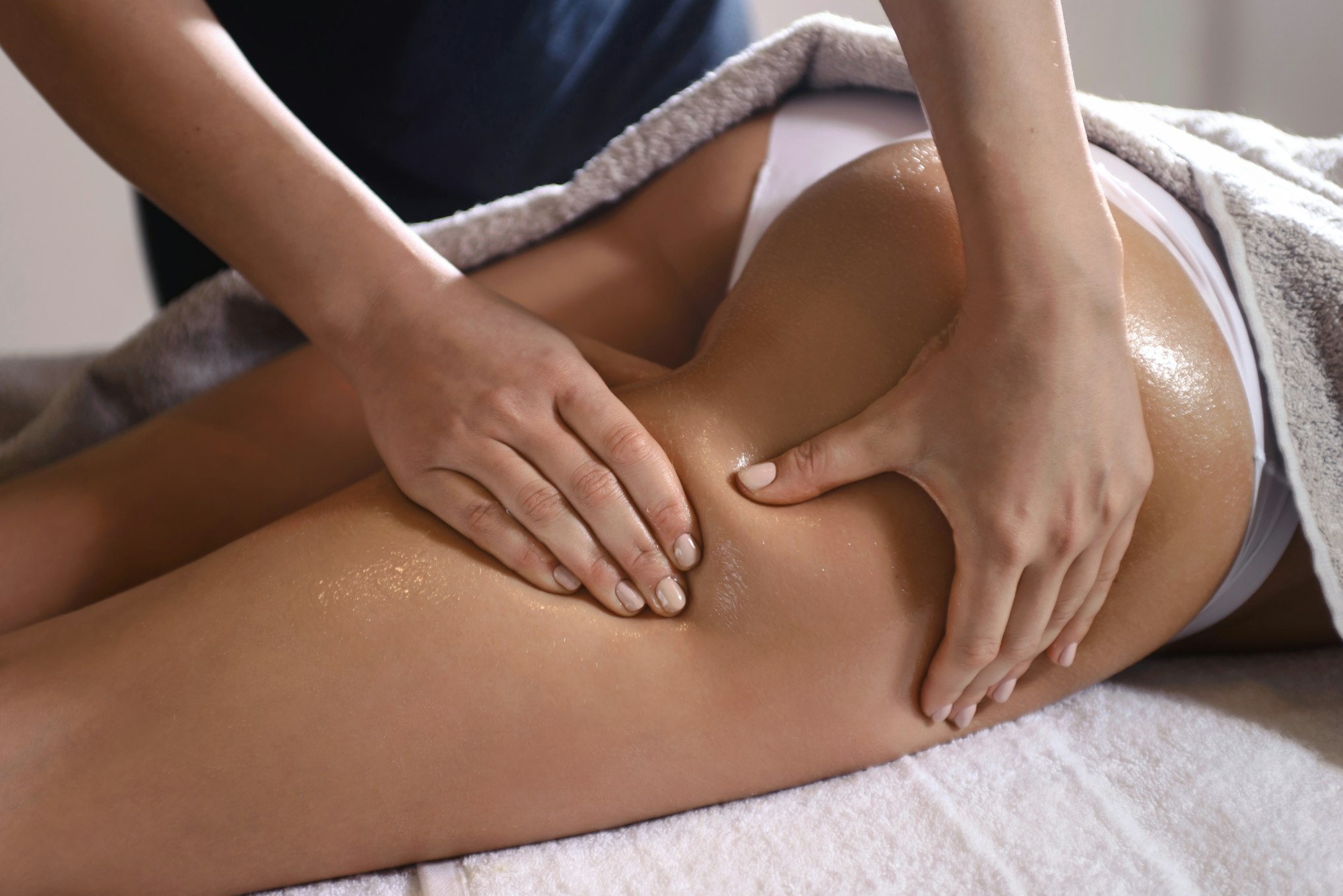Massage may help improve how cellulite looks by:
- removing excess fluids from tissues
- repositioning fat cells
- enhancing blood flow
- making skin appear plumper
That said, massage will not eliminate cellulite permanently. While it can lessen the visible signs, improvements usually fade over time and follow-up sessions are often required.

Massage devices marketed for cellulite
Numerous massage tools claim to diminish cellulite, but many lack strong evidence of effectiveness.
For example, foam rollers — firm, cylindrical foam tools — are commonly used with the idea they can disrupt fat deposits. However, the American Council on Exercise reports that foam rolling does not improve the appearance of cellulite.
Similarly, there’s little convincing evidence that handheld vibrating massagers or dry brushing — brushing dry skin with a soft brush — deliver meaningful or long-lasting results for cellulite.
One device that has demonstrated some potential is endermologie. This FDA-cleared machine lifts, stretches, and rolls the skin to mobilize fat and lessen cellulite. The American Academy of Dermatology (AAD) notes mixed outcomes: when improvements occur, they often diminish after about a month unless treatments continue.
What research shows
Certain studies indicate specific massage approaches can temporarily reduce cellulite, but many authors emphasize the short-lived nature of these benefits.
- A 2015 study reported that dry cupping may promote the removal of fluid, waste products, and toxins, which could enhance the look of cellulite. In that trial, suction cups were applied to areas with cellulite while a manual pump created negative pressure. After five weeks of treatment, the average cellulite grade among participants dropped from 2.4 before cupping to 1.68 after treatment.
- A 2010 study examined effects of mechanical massage (using a device such as endermologie), manual lymphatic drainage (a gentle technique to encourage lymph flow and fluid removal), and connective tissue manipulation (CTM), which applies pressure to ligaments, tendons, and tissue between muscle and skin to boost circulation. All three methods were associated with reductions in fat thickness and thigh circumference where the treatments were performed.

Points to keep in mind
Cellulite is widespread, particularly among women. Having cellulite does not automatically indicate you are overweight, inactive, or unhealthy.
Although massage is unlikely to produce lasting removal of cellulite, it offers other advantages. Massage can promote relaxation, ease muscle tightness and soreness, and reduce body pain. It may not substantially change appearance in the long run, but it can improve how you feel.
If you’re worried about the look of your cellulite, consult a dermatologist who can discuss more established treatments.
The AAD highlights two approaches that show promise:
- laser treatments
- subcision — a procedure in which a needle is inserted beneath the skin to cut fibrous connective bands, allowing the surface to appear smoother
What is cellulite?
Cellulite describes skin that appears dimpled or lumpy. Research suggests that the majority of adult women have some degree of cellulite, typically on the hips, buttocks, and thighs. It can also be present on the lower abdomen and upper arms.
Also called gynoid lipodystrophy, cellulite can be more noticeable in people with higher body fat, but it also affects very lean individuals.
What causes cellulite?
The skin, fat, muscle, and other tissues are organized in layers. Cellulite is thought to result when fibrous connective bands that tether the skin to muscle weaken or change, allowing fat cells to protrude into the skin layer. This produces the uneven, bumpy texture often compared to cottage cheese.
Everyone has fat cells, and while cellulite can affect anyone, some people are more predisposed. Factors that increase the likelihood of developing cellulite include:
- Gender. Men’s connective tissue is arranged in a crisscross pattern which helps hold fat in place. Women’s connective bands are more vertical, making it easier for fat to bulge toward the skin surface.
- Age. With aging, skin loses elasticity and connective tissue bands may weaken, making cellulite more apparent.
- Hormones. Hormones — especially estrogen — influence fat cell formation and distribution, which may explain why cellulite is more common in women and why it often appears after puberty or can worsen during pregnancy.
- Genetics. Heredity can determine fat distribution, skin quality, and other traits linked to cellulite risk.
- Diet. Studies suggest that diets high in fat, salt, and preservatives may promote metabolic changes that accelerate cellulite development.
- Lifestyle. Inactivity, excessive alcohol intake, and other lifestyle factors can impair circulation and influence inflammation and fat cell behavior, contributing to cellulite.
Takeaway
Cellulite is normal and usually not a medical issue, though it may cause cosmetic concern. If you choose to try massage for cellulite, keep its limitations in mind.
Massage is not a cure, but it may temporarily enhance skin appearance and make cellulite less noticeable. Given its many wellness benefits, massage can still be a valuable part of your self-care routine.


















Leave a Reply
You must be logged in to post a comment.